Wood Chemistry

Our research projects:
1. CHEMARTS & DWoC 2.0
CHEMARTS is a long-term strategic collaboration between two Aalto University schools, The School of Chemical Technology (Aalto CHEM) and The School of Arts, Design and Architecture (Aalto ARTS). Read more about CHEMARTS here.
Design Driven Value Chains In The World Of Cellulose (DWoC) is a multidisciplinary research collaboration project focused on finding new & innovative applications for cellulosic materials. Read more about the DWoC research collaboration here.
2. Catalytic Bleaching
Pulp bleaching is a fundamentally important part of a modern state-of-the-art pulp mill. The work carried out within the Wood Chemistry research group concentrates on completely new catalytic pulp bleaching innovations which could potentially lead to sizeable economic and environmental benefits due to reduced raw material and energy needs.
3. Utilization of Willow Bark
Traditionally willow (Salix) has been studied mainly as an energy crop for the combined heat and power generation. The Wood Chemistry research group is conducting research on the alternative uses of willow bark with extremely interesting and promising results. The work is currently focusing on the chemical structure of the willow bark and its fractination to extractives and fibers.
4. Cell Wall Reactivity
Doctoral candidates from the Wood Chemistry research group are taking part in a research program focusing on the development of advanced scientific methods for analyzing cellulose fiber reactivity. Work carried out within this topic include accessibility measurements based on dynamic vapour sorption (DVS) with deuterium oxide (D2O) exchange as well as work on the reactivity of cellulose fibers with iodometric titration duting TEMPO+-mediated oxidation.
5. Cell Wall Structure
The cell wall structure studies carried out in the Wood Chemistry research group aim at revealing the wood ultrastucture i.e. the organization & distribution of subcellular components such as cellulose and lignin. The ultrastructure of wood has a huge influence on the various processes that are used to transform wood into different products as the tight arrangement of cell components limit their accessibility in different chemical and mechanical treatments.
6. Raman Spectroscopy
The Wood Chemistry research group of Professor Tapani Vuorinen is pioneering the utilization of the optical UV-Raman imaging to study the structure of cell wall in combination with highly advanced mathematical and computational modelling.
7. Modeling of Pulping & Bleaching
The extensive work carried out within the wood chemistry research group on modeling of pulping and bleaching processes has resulted in e.g. the development of a pulp bleaching model which is a powerful tool for scientists and engineers alike.
Research group members:

Related content:
No more plastic wrap? Students create novel biobased packaging for cucumbers
A dip in the biobased liquid gives cucumbers a protective film. Innovative idea will be presented in the international BioDesign Challenge competition.
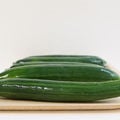
Nordic Biomaterials with CHEMARTS – Small steps for change are valuable
In the coming years, our material world will change dramatically. The overuse of existing raw materials cannot continue, and global consumption must decrease.

New starts at the Kemira Boot Camp
Kemira together with the School of Chemical Engineering organized a Boot Camp for the students of Aalto University.
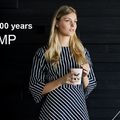
Mixing people
Mixing people with different backgrounds is a nutrient for creativity, says professor Tapani Vuorinen.

Professors Markus Linder and Tapani Vuorinen invited to the Finnish Academy of Science and Letters
Professor of Biomolecular Materials Markus Linder and Professor of Wood Chemistry Tapani Vuorinen from the School of Chemical Engineering at Aalto University have been elected as new members of the Finnish Academy of Science and Letters.

What’s cooking? Bio-based material experiments by CHEMARTS
From a bio-adhesive to reed panels and cellulose foam, a unique work created in collaboration with designers and biomaterial researchers shows what natural materials can do.

The CHEMARTS Cookbook
Inspiration for Material Enthusiasts
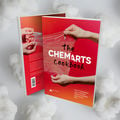
Students at UPM Biofore Boot Camp get to solve real-life problems
The multidisciplinary teams brainstormed new packaging solutions for paper rolls and learnt team work skills, networking skills and how to convincingly present one’s own ideas.

Seed funding led to a multimillion strategic collaboration between designers and chemists
ChemArts, which brings together students of biomaterials and design, is already looking into business opportunities and preparing for world domination.
The rebirth of pulp
CHEMARTS brings together biomaterials and design students. Their encounters sprout ideas that can make the world a better place.
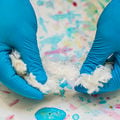
Catalyst could help bleach pulp in seconds
In addition to time, a promising invention in the field of chemical technology could also save energy and chemicals.
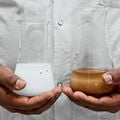
Latest publications:
Production of Micro Nanofibrillated Cellulose from Prerefined Fiber via a Dry Dielectric Barrier Discharge (DBD) Oxygen Plasma-Treated Powder Precursor
Characterization of crude extracts from willow barks and their performance as proanthocyanidin -based coagulants in water treatment
Refinability of mercerized softwood kraft pulp
A note on the chemical fate of the DABCO catalyst in amine-catalyzed hypochlorite bleaching of cellulosic pulps
Microwave hydrolysis, as a sustainable approach in the processing of seaweed for protein and nanocellulose management
Nanotheranostics to target antibiotic-resistant bacteria: Strategies and applications
Seasonal dynamics in structural characteristics within bark stems of cultivated willow (Salix sp.) by NMR and time-gated Raman spectroscopy
Structural features of lignin-hemicellulose-pectin (LHP) orchestrate a tailored enzyme cocktail for potential applications in bark biorefineries
Valorization of long-neglected spruce bark and bark-press effluents through integrated utilization of stilbenoids and pectin
Willow Bark-Derived Material with Antibacterial and Antibiofilm Properties for Potential Wound Dressing Applications
- Published:
- Updated: